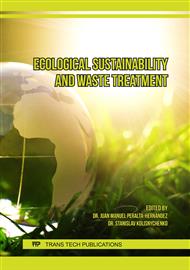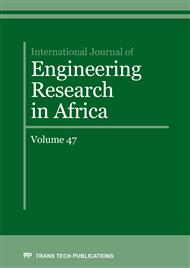[1]
M. Jašek, J. Česelský, P. Vlček, M. Černíková & E. Beránková, Aplication of BIM process by the evaluation of building energy sustainability, Adv. Mat. Res. 899 (2014) 7-10.
DOI: 10.4028/www.scientific.net/amr.899.7
Google Scholar
[2]
I. Boustead, G.F. Hancock, Handbook of Industrial Energy Analysis, E Horwood: New York NY USA, (1979).
Google Scholar
[3]
SAIC, Life Cycle Assessment: Principles & Practice, EPA p.88, (2006).
Google Scholar
[4]
D. Elcock, Life-Cycle Thinking for the Oil & Gas Exploration & Production Industry Argonne, National Laboratory, p.160, (2007).
Google Scholar
[5]
A.P. Arena and C. de Rosa, Life cycle assessment of energy and environmental implications of the implementation of conservation technologies in school buildings in Mendoza-Argentina, Build. Envi., 38(2), (2003) 359-368.
DOI: 10.1016/s0360-1323(02)00056-2
Google Scholar
[6]
F. Kuda, E. W. Berankova, EU Approaches to Unification of Methodologies for Determination of Building Object Life Cycle Costing, Adv. Mat. Res. 1044 (2014) 1863-1867.
DOI: 10.4028/www.scientific.net/amr.1044-1045.1863
Google Scholar
[7]
B.L.P. Peuportier, Life cycle assessment applied to the comparative evaluation of single family houses in the French context, Energ. Build., 33 (2001) 443-450.
DOI: 10.1016/s0378-7788(00)00101-8
Google Scholar
[8]
A. Eštoková, M. Porhinčák, Reduction of primary energy and CO2 emissions through selection and environmental evaluation of building materials, Theor. Found. Chem. Eng., 46(6) (2012) 704-712.
DOI: 10.1134/s0040579512060085
Google Scholar
[9]
O. Dahlstrøm, K. Sørnes, S.T. Eriksen, E.G. Hertwich, Life cycle assessment of a single-family residence built to either conventional or passive house standard, Energ. Build., 54 (2012) 470-479.
DOI: 10.1016/j.enbuild.2012.07.029
Google Scholar
[10]
H. Monteiro, F. Freire, Life-cycle assessment of a house with alternative exterior walls: comparison of three impact assessmet methods, Energ. Build., 47 (2012) 572-583.
DOI: 10.1016/j.enbuild.2011.12.032
Google Scholar
[11]
A.Shirazi, B. Ashuri, Embodied life cycle assessment comparison of single family residential houses considering the 1970s transition in construction industry: Atlanta case study, Build. Envi., 140 (2018) 55-67.
DOI: 10.1016/j.buildenv.2018.05.021
Google Scholar
[12]
M. Lavagna, C. Baldassarri, A. Campioli, S. Giorgi, A. Dall Valle, V. Castellani, S. Sala, Benchmarks for environmental impact of housing in Europe: Definition of archetypes and LCA of the residential building stock, Build. Envi., 145 (2018) 260-275.
DOI: 10.1016/j.buildenv.2018.09.008
Google Scholar
[13]
K. Adalberth, A. Almgren, E.H. Petersen, Life cycle assessment of four multi- family buildings, Int. J. L. Ener. Sust. Build., 2(1) (2001) 1-21.
Google Scholar
[14]
A.P. Arena, C. de Rosa, Life cycle assessment of energy and environmental implications of the implementation of conservative technologies in school building in Mendoza-Argentina, Build. Envi., 38 (2003) 359–68.
DOI: 10.1016/s0360-1323(02)00056-2
Google Scholar
[15]
C. Scheuer, G.A. Keoleian, P. Reppe, Life cycle energy and environmental performance of a new university building: modeling challenges and design implications, Ener. Build., 35 (2003) 1049-1064.
DOI: 10.1016/s0378-7788(03)00066-5
Google Scholar
[16]
O.F. Kofoworola, S.H. Gheewala, Environmental life cycle assessment of a commercial office building in Thailand, Int. J. Life Cycle Assess, 13 p.498, (2008).
DOI: 10.1007/s11367-008-0012-1
Google Scholar
[17]
A. Monokova, S. Vilcekova, L. Meciarova, I. Selecka, Environmental Impacts of Detached Family Houses Used Natural Building Materials, Multidis. Dig. Publ. Inst., Proc., 2(20) (2018) 1301.
DOI: 10.3390/proceedings2201301
Google Scholar
[18]
eTool, eToolLCD, Software Available online: https://etoolglobal.com/, (2018).
Google Scholar



